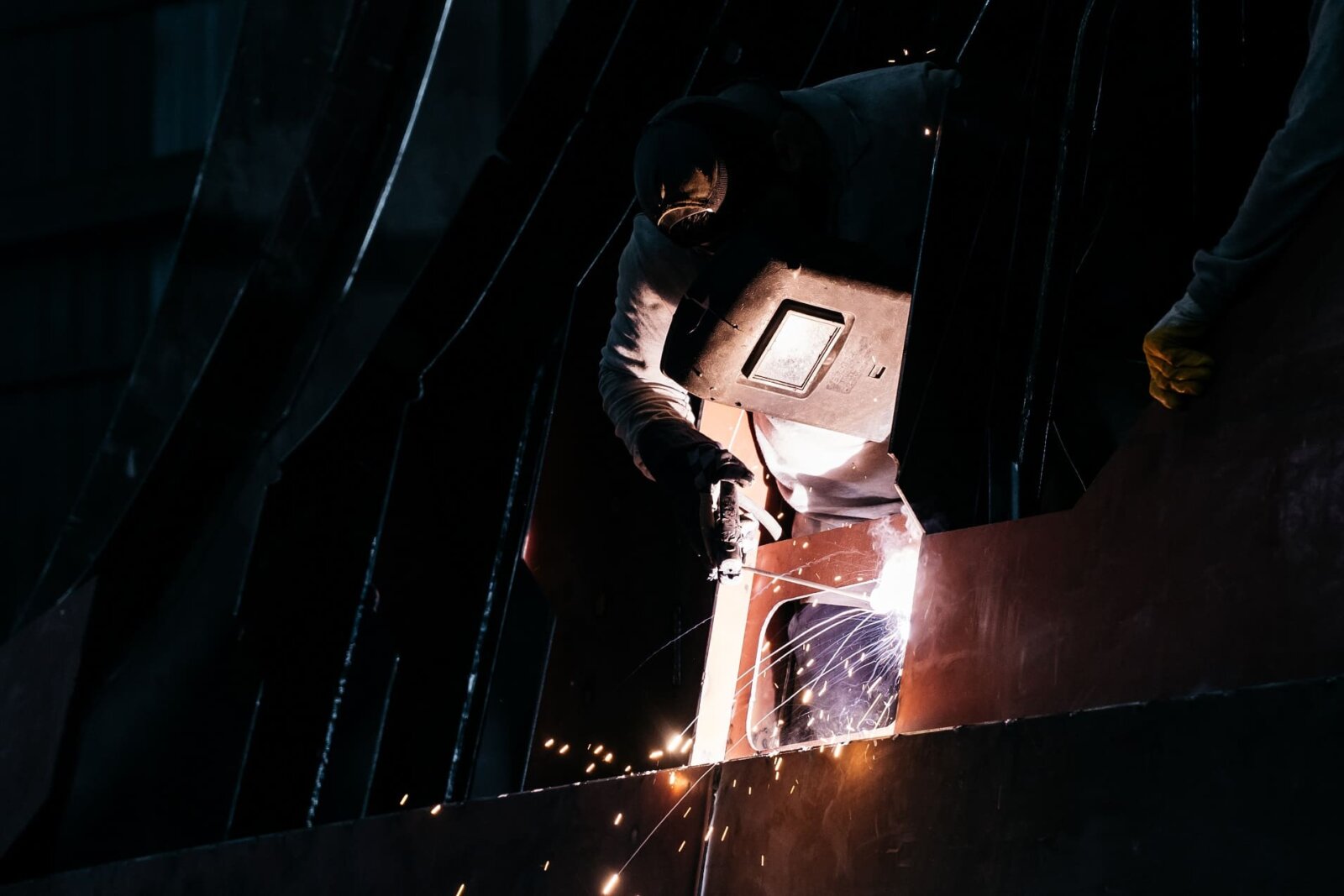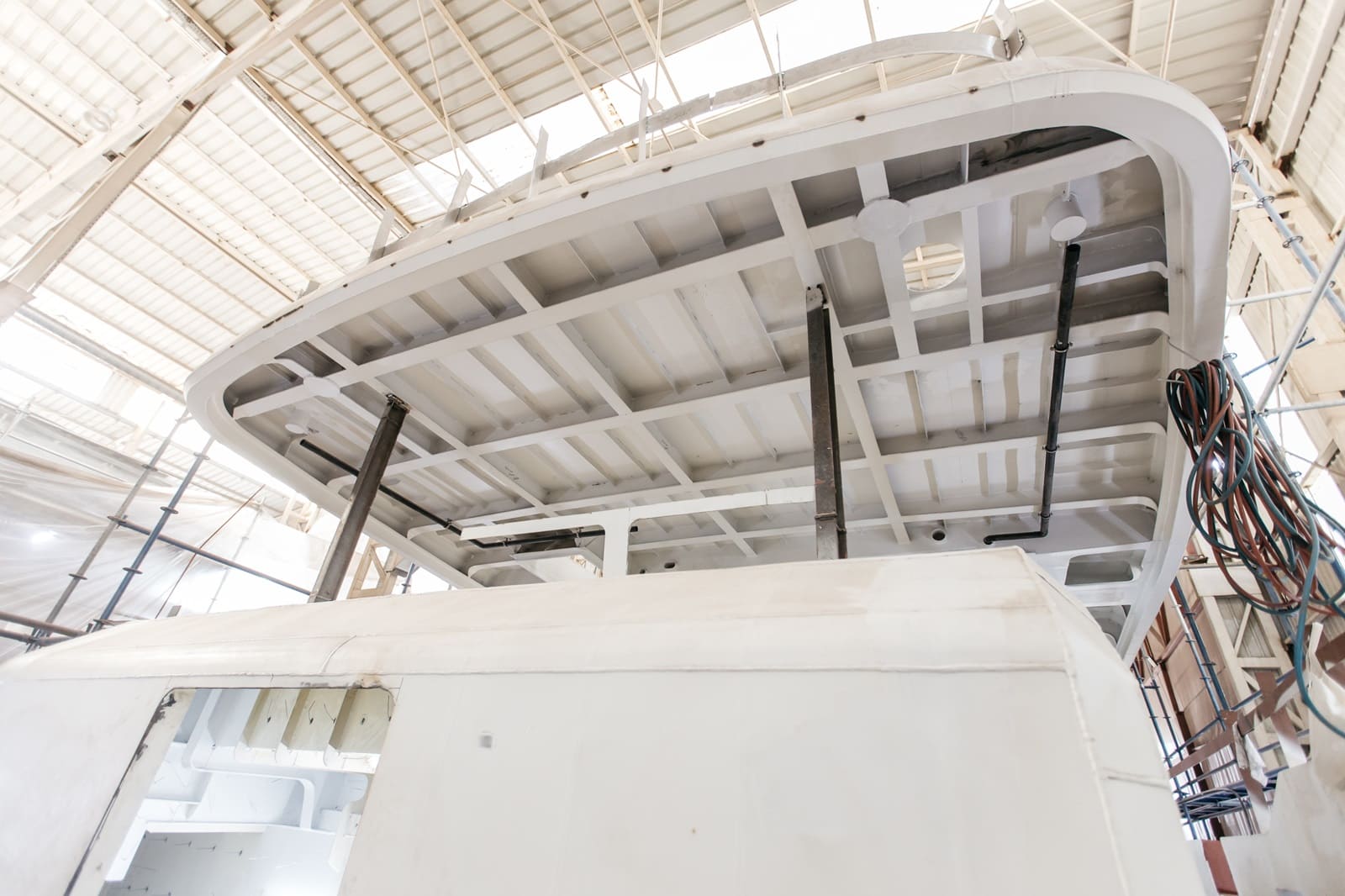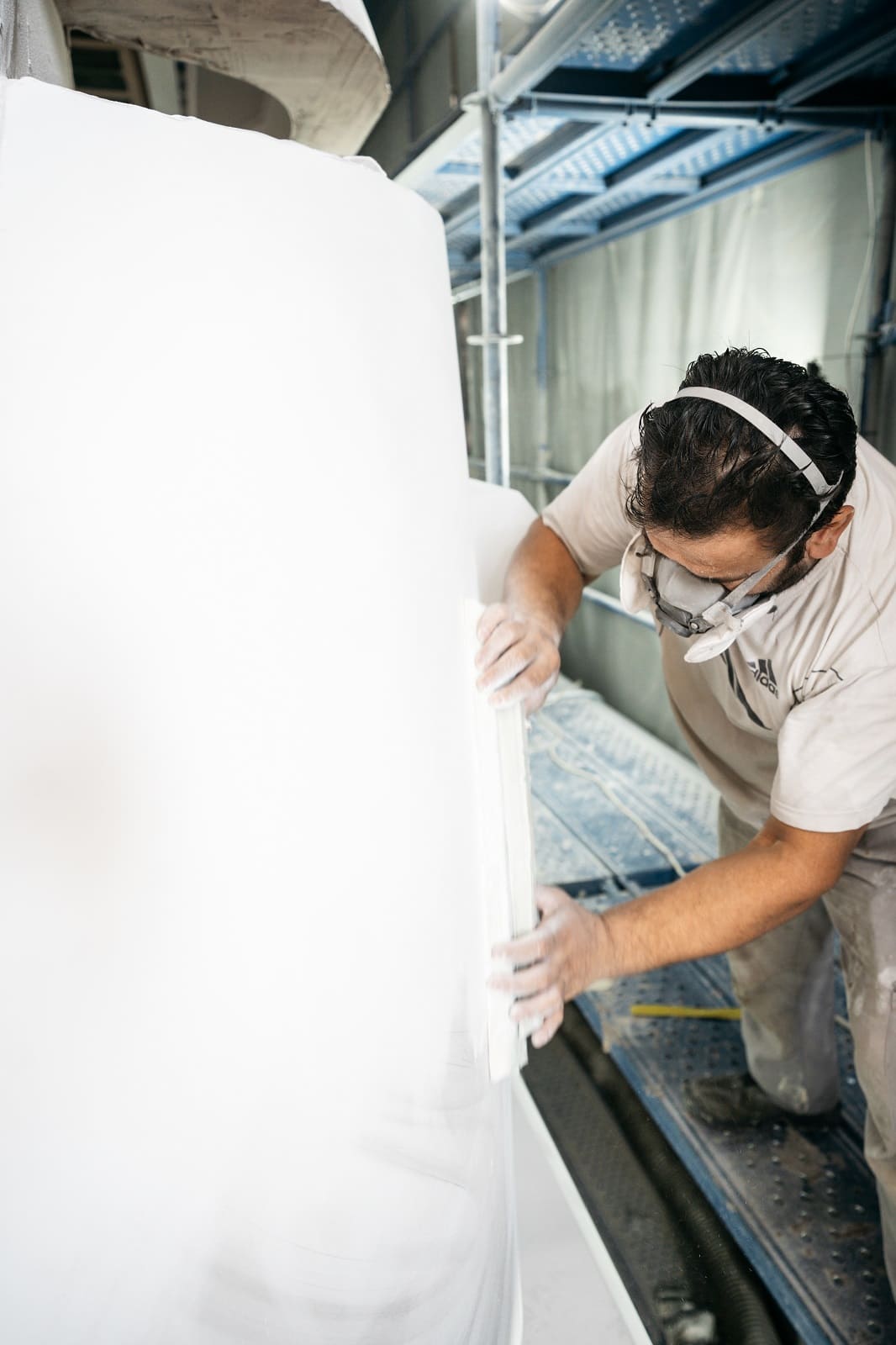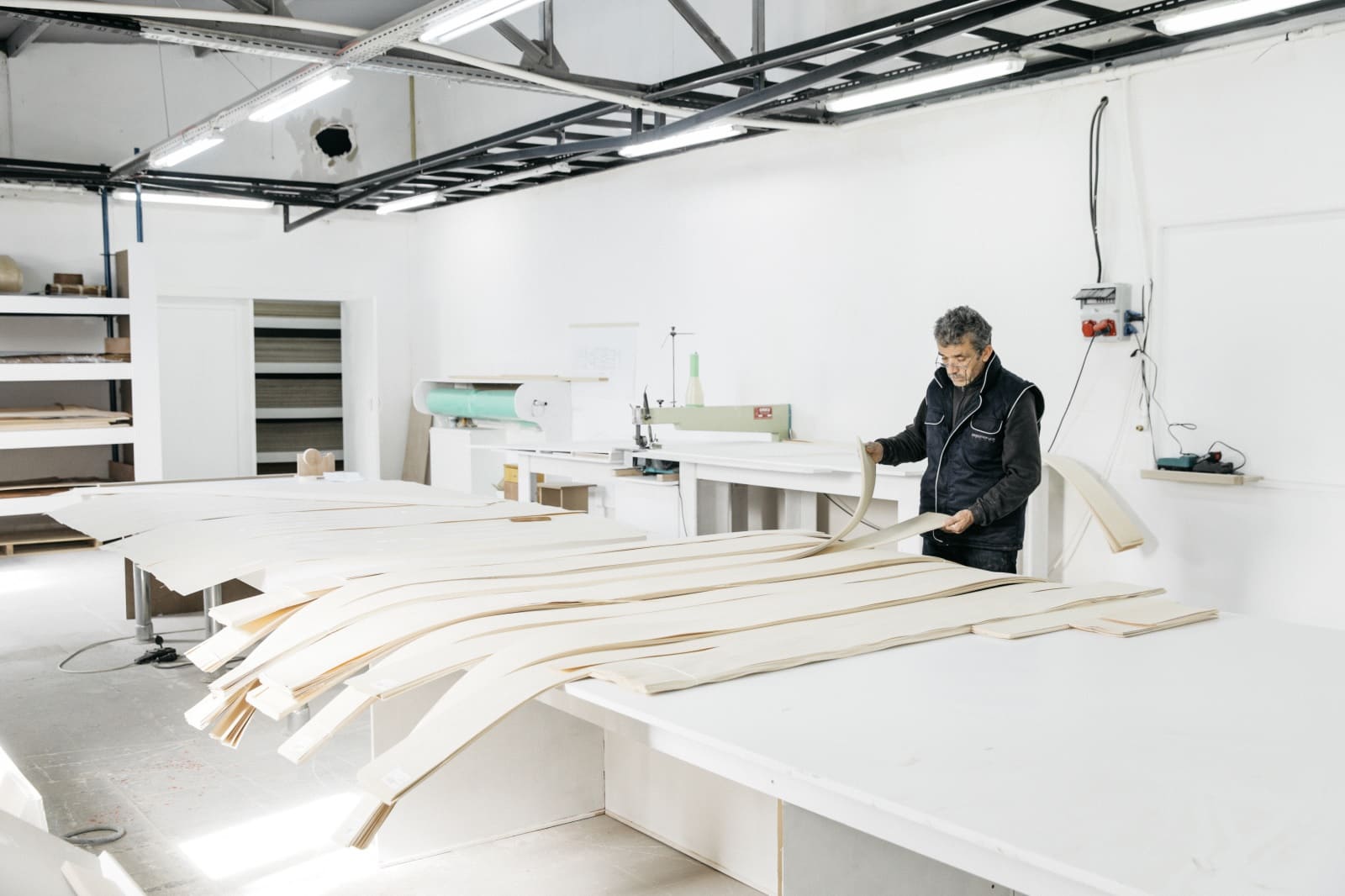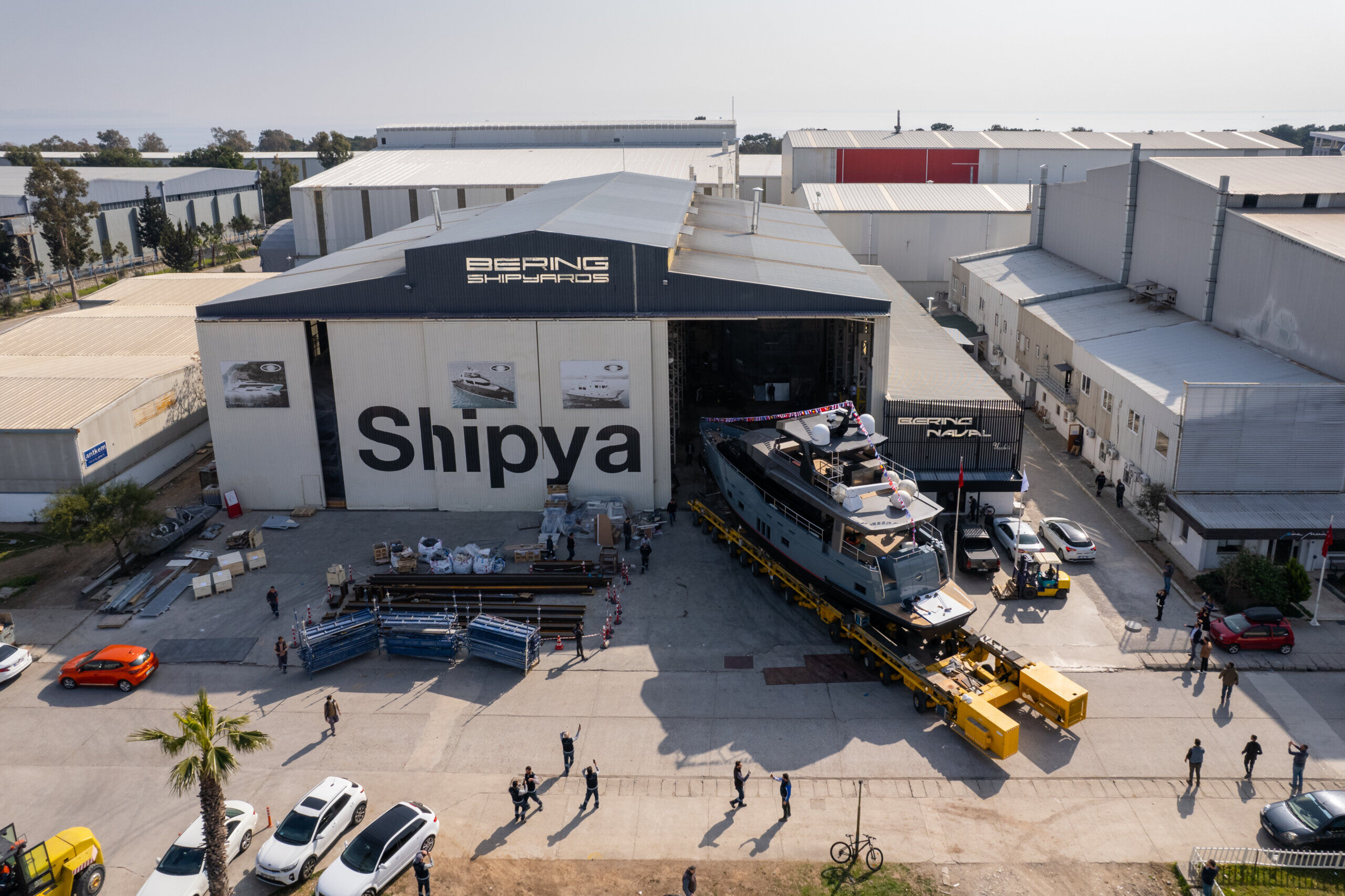Building a boat is a long and complicated process, which takes months and years to finalize. It requires a lot of planning to ensure that construction goes smoothly and problem-free. The processes involve many people and teams, both internally and externally. The work is performed in consecutive stages or simultaneously. Thorough coordination and constant oversight are needed for the boat to be built and launched in time.
| Main steps in building Bering boats: |
|---|
| 1.Choosing the boat from Bering’s model line |
| 2. Selecting standard and custom options |
| 3. Adjusting and finalizing the concept of the interior design |
| 4. Drawing the boat and getting acceptance from the owner on the designs and engineering documentation |
| 5. Laying the keel |
| 6. Constructing and turning the hull |
| 7. Connecting the hull and the superstructure |
| 8. Sandblasting and painting |
| 9. Electrical wiring |
| 10. Installing pipes and other communications |
| 11. Insulation |
| 12. Putting in machinery and equipment |
| 13. Fixing the fire protection system |
| 14. Putting down flooring, walls, installing furniture |
| 15. Launching the boat |
| 16. Adjusting systems and equipment |
| 17. Going to sea trials |
| 18. Finalizing the works |
| 19. Handing the boat to the customer |
Semi-custom boats and owners’ involvement
Our boats are semi-custom, implying the owners’ input in the exterior designs and other yacht features. The owner chooses one of the pre-set models, such as B75, B165, B60 CAT, and so on. Their external design and naval architecture remain unchanged; modifications can be made to some of the internal layouts and structure, designs, and extra features offered depending on the model.
Two things will always remain true about Bering boats no matter size or configuration:
- They will possess an over 3000-mile range or the capability to cross the ocean without visiting a port;
- All of them live onboard for long periods, with comfort at the top or above the class requirements or what comparable competitors offer.
The functionality of Bering boats goes over styling. Still, since many parameters can be modified based on the owners’ requests, they are very involved in decisions regarding the boat in-built. From the beginning to launch, owners are a part of our team, just like the construction workers, designers, or installers. Owning a yacht is fun, but sometimes it also requires some unexpected work.
The importance of coordination
Every construction activity has its timing. Deadlines, production, and delivery orders are equally important because some tasks cannot start before others are finished. Like an orchestra playing in unison, the boat-building process moves along. Machinery installation is done simultaneously, such as piping, electricity wiring is parallel with furniture assembly, and the upholstery and flooring are fixed simultaneously with the insulation. Everyone is contributing their part just in time to keep the harmony flowing.
Step by step: how we build
Our first step is to agree with the owners on the size. After that, the metalwork can begin – with the keel-laying ceremony. It is a ritual inception of the boat: the central structural part of the yacht is laid down, and the owners weld a coin into it. This process initiates the actual building of the boat.
Hull construction is performed according to the 3D model developed by the naval architects. Most Bering hulls are built upside-down, simplifying the welders’ access. Thickest 10-mm bottom plates of marine steel and then 8-to-6-millimeter hull side plates are welded together to the keel and bulkheads. After the welding is finished, the hull is ready for turning. Using two cranes, one raising and one lowering the construction, the hull is turned and put onto the building berth. Turning takes several hours, as it should be done very carefully. The next step is connecting the hull with the superstructure.
The aluminum superstructure is made simultaneously with the 6-to-10-millimeter marine-grade aluminum hull. Since aluminum and steel are different metals, connecting the two cannot be performed through simple welding, riveting, or bolted joints due to the higher risk of corrosion. Bering uses a technology called TRICLAD, which is very effective in forming a hermetic metal joint that cannot be penetrated by water. After the hull and the superstructure are connected, all the construction and welding works are finished, and the sandblasting and painting processes are next.
Sandblasting is a way of cleaning the boat and preparing her surfaces for paint. High-pressure sand saws down all the unneeded layers, removing rust and smoothing the metal so the paint sticks better. In addition to aesthetical reasons, the most important goal of painting a boat is to stop corrosion and rusting. Another reason is to slow the marine organisms’ build-up to the hull. Several brands of paint are used for different works and types of protection. After the paint dried out, we continue with the installation of wiring, pipes, and other communications.
We use different teams to install electric wires and plastic and metal pipes. Works can be done simultaneously or one after one. Teams can go from the bottom up or vice versa – there is no difference as we have a 3D model we can follow. Usually, everything starts from the lower levels. Kilometers of wires and pipes are installed, and it is very important to be thorough and attentive while performing the process. Different types of wires and pipes are used for different systems, most of which should be insulated.
Insulation is an important part of every boat building. We insulate from noise and vibration, water and fire, high and low temperatures, corrosion and condensation, and so on. The number of materials, insulation techniques, and approaches to insulation is large. For example, we use rock wool or FireMaster material to protect from fire. We insulate the pipes and electrical wires. Separate plates are used to absorb noise and vibration. Protective mascots and pastes are used for thermal insulation and sound control. This list goes on and on, and, again, different specialists are used to install various types of insulation. What is also critical for the timing of the boat delivery is that the equipment installation and furniture teams also work onboard. Depending on the boat’s size, up to 50 people can work onboard simultaneously!
The equipment installation takes place at the same time. Engines, generators, batteries, stabilization systems, controllers, pumps, compressors, conditioners, shafts, propulsion systems, propellers… The engineers calculate what capability is needed for regular work of the boat, and the design team draws and plans the installation and sizing of the machinery. Equipment wiring and cable tracing are other parts of electric and piping works, and they just add to the process of installing the communications. On top of that, fire protection equipment is installed, including fire extinguishers placed throughout the boat and an automatic fire suppression system, which protects the spread of fire from the engine room.
Now, if you think that this is for simultaneous work onboard, you need to correct it. Drawing of the furniture and interiors starts at the very beginning, and most of the elements are produced by this time. Everything related to design, functionality, furniture, colors, textures, and so on requires a lot of input from the owners. It is possible to make changes in the later phases of construction, but late changes will increase the price. The wood- and interior works begin as soon as the installers of communications and equipment vacate a space.
We create our furniture in-house and make it modular and unified. Our teams use high-end materials protected from the elements and will serve for a long time. The modules are produced in our furniture shop and installed onboard as a puzzle. Thanks to special computerized modeling, everything fits tight and snuggles. The flooring and walls, just like the furniture, are created from materials that are weather- and fire-resistant. Flooring materials are also anti-slippery. The walls are not for decoration only; they hide the wiring and pipes and must be installed after the communication process is finalized. Moving along the boat, room to room, these installation teams take us closer to the final stages of construction.
After the mechanical works, discharge connections, under-the-hull installations, and exterior works are finalized, the boat can be launched. The yacht also undergoes vacuum testing to ensure the hull is watertight before going afloat. We use specialized trucks and trailers for transportation to the harbor, and then the crane lifts the yacht and carefully transfers her to the water. Before that, the well-known naming ceremony, which involved smashing the champagne bottle across the hull, took place. This is how the boat gets her name and considers it ready for launch – and launched she gets!
After the launch, the boat is prepared for sea trials. All the main systems are double-checked, especially engines, life safety equipment, watertight doors, and fire protection systems. Steering, navigation, radar, and communication systems must work correctly before going to the open sea. Insurance companies, customs, and certification bureau representatives inspect the boat before trial.
As the boat is cleared to sail, she gets her systems examined at the open sea. The captain and crew familiarize themselves with the vessel, check how the boat is performing, and assess her usability and comfort. Engines and all the systems are tested in real sea conditions and at maximum loads. Final adjustments to the systems are performed in order to hand the yacht over to the owner in the best working condition.
With the handover and signing of all the paperwork, the construction stage, which takes many months, is technically finalized. We give all the manuals, operator’s books, and other paperwork to the owner, but we do not break our ties. There is always follow-up service, regular maintenance, and post-sale and marketing team communication. The boat and her owner become a part of the Bering family – a very close circle of people who live the Bering lifestyle.
Once again, building a boat is a very meticulous and thorough process. It is a symphony, where we have to work in unison to create harmony – and make perfect yachts. And this is how we do it at Bering.


